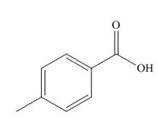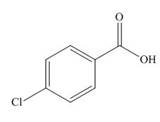
Package: Loose Leaf for Organic Chemistry with Biological Topics with Connect Access Card
5th Edition
ISBN: 9781260170405
Author: SMITH
Publisher: MCG
expand_more
expand_more
format_list_bulleted
Concept explainers
Textbook Question
Chapter 19, Problem 19.37P
Which compound in each pair has the lower
a.  or
or 
b.  or
or 
Expert Solution & Answer
Trending nowThis is a popular solution!

Students have asked these similar questions
16.43 Draw the products of each reaction.
a.
b.
d.
HO
C.
H
Lore
L
sob
Br₂
FeBr3
e.
NO₂
Br
HNO3
H₂SO4
CI
AICI 3
Cl₂
FeCl3
SO3
H₂SO4
1.
b. Which is a stronger base?
2.
or
Rank the compounds in each group in order of increasing basicity.
Chapter 19 Solutions
Package: Loose Leaf for Organic Chemistry with Biological Topics with Connect Access Card
Ch. 19 - Prob. 19.1PCh. 19 - Problem 19.2 Give the structure corresponding to...Ch. 19 - Problem 19.3 Draw the structure corresponding to...Ch. 19 - Prob. 19.4PCh. 19 - Prob. 19.5PCh. 19 - Problem 19.6 Rank the following compounds in order...Ch. 19 - Problem 19.7 Explain how you could use IR...Ch. 19 - Prob. 19.8PCh. 19 - Problem 19.9 How many tetrahedral stereogenic...Ch. 19 - Problem 19.10 What alcohol can be oxidized to each...
Ch. 19 - Problem 19.11 Identify A-D in the following...Ch. 19 - Problem 9.12 Draw the cation that results when a...Ch. 19 - Problem 19.13 Draw the products of each acid-base...Ch. 19 - Problem 19.14 Given the values in Appendix A,...Ch. 19 - Problem 19.15 Rank the labeled protons in...Ch. 19 - Problem 19.16 Match each of the following values ...Ch. 19 - Problem 19.17 Rank the compounds in each group in...Ch. 19 - Problem 19.18 Rank the compounds in each group in...Ch. 19 - Prob. 19.19PCh. 19 - Problem 19.20 Which of the following pairs of...Ch. 19 - Problem 19.21 Two other commonly used sulfonic...Ch. 19 - Problem 19.22 Draw both enantiomers of each amino...Ch. 19 - Problem 19.23 Explain why amino acids, unlike most...Ch. 19 - Problem 19.24 Draw the positively charged,...Ch. 19 - Prob. 19.25PCh. 19 - Problem 19.26 Explain why the of the group of...Ch. 19 - Answer each question for A and B depicted in the...Ch. 19 - Prob. 19.28PCh. 19 - 19.29 Give the IUPAC name for each compound.
a....Ch. 19 - 19.30 Draw the structure corresponding to each...Ch. 19 - Prob. 19.31PCh. 19 - 19.32 Rank the following compounds in order of...Ch. 19 - 19.33 Draw the organic products formed in each...Ch. 19 - 19.34 Identify the lettered compounds in each...Ch. 19 - 19.35 Using the table in Appendix A, determine...Ch. 19 - 19.36 Draw the products of each acid-base...Ch. 19 - 19.37 Which compound in each pair has the lower ?...Ch. 19 - 19.38 Rank the compounds in each group in order of...Ch. 19 - 19.39 Rank the compounds in each group in order of...Ch. 19 - 19.40 Match the values to the appropriate...Ch. 19 - Prob. 19.41PCh. 19 - 19.42 Which carboxylic acid has the lower ,...Ch. 19 - Prob. 19.43PCh. 19 - 19.44 Explain the following statement. Although...Ch. 19 - Prob. 19.45PCh. 19 - 19.46 Explain why the of compound A is lower than...Ch. 19 - 19.47 Rank the following compounds in order of...Ch. 19 - Prob. 19.48PCh. 19 - Prob. 19.49PCh. 19 - 19.50 Draw all resonance structures of the...Ch. 19 - As we will see in Chapter 23, CH bonds are...Ch. 19 - Prob. 19.52PCh. 19 - The pKa of acetamide (CH3CONH2) is 16. Draw the...Ch. 19 - 19.54 Write out the steps needed to separate...Ch. 19 - Prob. 19.55PCh. 19 - Can octane and octan -1- ol be separated using an...Ch. 19 - 19.57 Identify each compound from its spectral...Ch. 19 - 19.58 Use the NMR and IR spectra given below to...Ch. 19 - 19.59 An unknown compound (molecular formula )...Ch. 19 - 19.60 Propose a structure for (molecular formula...Ch. 19 - 19.61 Match the data to the appropriate...Ch. 19 - Prob. 19.62PCh. 19 - Prob. 19.63PCh. 19 - Prob. 19.64PCh. 19 - 19.65 For each amino acid ,draw its neutral,...Ch. 19 - Calculate the isoelectric point for each amino...Ch. 19 - 19.67 Lysine and tryptophan are two amino acids...Ch. 19 - Prob. 19.68PCh. 19 - Prob. 19.69PCh. 19 - Prob. 19.70PCh. 19 - 19.71 Hydroxy butanedioic acid occurs naturally in...Ch. 19 - 19.72 Although it was initially sold as a rat...
Knowledge Booster
Learn more about
Need a deep-dive on the concept behind this application? Look no further. Learn more about this topic, chemistry and related others by exploring similar questions and additional content below.Similar questions
- 16.41 Draw the products of each reaction. a. b. HO NO₂ mellanrios H HNO3 H₂SO4 Br₂ FeBr3 AICI3 d. e. Br- edmun adtonie F prier f. F (X) napoln NO₂ Cl₂ FeCl3 SO3 H₂SO4 onho sur + Na Sarrow_forward16.34 For which compounds can a second resonance structure be drawn? Draw an additional resonance structure for each resonance-stabilized compound. a. OCH₂ b. OCH₂ C. d. NHCH,arrow_forwardRank the compounds in each group in order of increasing acidity.arrow_forward
- Draw the products of each reaction and determine the direction of equilibrium.arrow_forwardThe boiling points of a range of organic compounds (A-D) of similar Mol. Wt.s are given below. OH OMe A в D b.p. 46-50°C Explain why the boiling point of C is higher than that of D. Explain why the boiling point of B is higher than that of A. Explain why the boiling point of C is higher than that of A. Which of these four compounds is most acidic? What makes it so acidic? b.p. 78'C b.p. 141'C b.p. 79'C (i) (ii) (iii) (iv)arrow_forwardNot sure if B would be the right onearrow_forward
- 1. Which is more acidic in each pair of compounds? a. CH3CH2OH vs CF3CH2OH b. Methanol vs 2-propanol c. CH3CF2OH vs CH3CCI2OH d. CH3CHFOH vs CH2FCH2OHarrow_forwardWhich compound is the strongest base?arrow_forwardHow does the reaction shown effect the water solubilty of the product? H HCI dhe A. product is more water soluble than the parent compound B. product is less water soluble than the parent compoundarrow_forward
- Draw the products of each reaction and decide if equilibrium favors the starting materials or the products. : a. -NH2 :O: b. NH : с. NH3 : d. NH2 +.arrow_forwardWhich species in each of the pairs is the stronger base?arrow_forwardDraw the product formed from a Michael reaction with the given starting materials using −OEt, EtOH.arrow_forward
arrow_back_ios
SEE MORE QUESTIONS
arrow_forward_ios
Recommended textbooks for you

IR Spectroscopy; Author: Professor Dave Explains;https://www.youtube.com/watch?v=_TmevMf-Zgs;License: Standard YouTube License, CC-BY